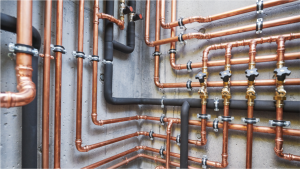Brick has been a popular building material for thousands of years. Brickwork is a popular choice for homeowners today due to its timeless appearance, low maintenance requirements, and resistance to the elements. Brick structures can be damaged and decayed like all things. To restore brickwork to its original glory, skilled masons have developed a technique called “tuck-pointing”. Two masons who are highly skilled, Mel Kahn of Early Times Home Solutions and Brian King from Chicago’s Best Pick, gave us a detailed explanation of the process and when homeowners might need it.
What IS Tuckpointing?
Tuck-pointing simply means that bricks or stonework are restored by grinding away or removing old mortar. The mortar is then replaced with a stronger, more structurally sound mortar. The goal is to match the mortar’s color as closely as possible. This applies to all brick and stone structures. However, this article will be focusing on brick chimneys. Mel and Brian stress that the most important part of this process is the grinding away and removing the damaged mortar. The process is like a visit to the dentist. “You have a tooth cavity, so the dentist will first drill the hole and remove the decayed material. A dishonest mason might attempt to make face tuck-pointing look easy. This would be a quick fix that can save you money and leave your chimney in an even weaker state. The mason simply applies a thin layer to the joint and does not do anything more than cosmetic makeovers. Mel and Brian explained that while this makes the joint look nice for a while it doesn’t last long.
A disreputable mason may also opt to tuck point only the joints that are in immediate repair, and ignore any surrounding brickwork that is likely to fail in a few months. They warn that while they fix five to six bricks, in reality there may be dozens, perhaps thirty, that aren’t yet broken but are ready to. Instead of relying on “Band-Aid” fixes, Mel or Brian insist that they “figure out the problem and fix the problem simultaneously.”
What Are Causes of the Problem
Tuck-pointing may be required for many reasons, apart from the wear and tear caused by weather and time. Mel and Brian say that it could be just a bad batch or appliances. However, homeowners don’t always consider how an appliance’s exhaust might affect their chimney. Condensation is formed when hot exhaust from a new appliance meets cool, humid air in the chimney. The interior bricks of a chimney become saturated. Mel and Brian also witnessed many instances where homeowners left the damper open for 24 hours per day throughout the year. Frost accumulation can occur near the chimney’s top. This moisture can eventually cause irreparable damage to the mortar joints.
How do I know if my Chimney Needs to be Tuck-Pointed or Not?
A number of signs can indicate that your chimney needs to be checked by a professional mason. Mel and Brian say that many homeowners find problems with their chimneys by cleaning out their gutters or cutting their lawn. Many homeowners will find bricks or mortar in their gutters or yards. If brick damage is not visible clearly from a safe vantage, homeowners should contact a mason to assess the damage. Mel and Brian encountered some homeowners who believed they could repair their chimneys using silicone caulk, rather than brick mortar. However, it is almost never recommended that homeowners attempt to tuck-pointing. There are safety considerations to consider, aside from the art involved in tinting and applying the mortar correctly. Chimney tuckpointing in Seattle requires ladders, roofs, and power tools. It’s dangerous work that should only be done by experienced professionals. Qualified masons are also trained to properly set up scaffolding and protect the roof. They will leave the area as clean as they found it.
Brick is a timeless material that homeowners consider to be worth the initial investment. Brick is far more durable than other building materials, but it still needs to be maintained properly. Masons have thousands of years worth of experience and knowledge. Proper tuck-pointing can help keep chimneys in working order and looking as good as they did when it was built.









